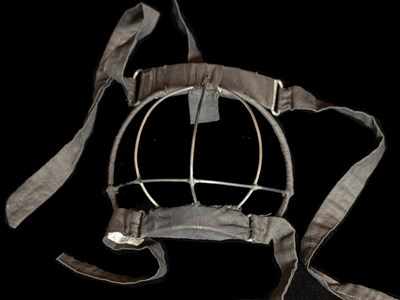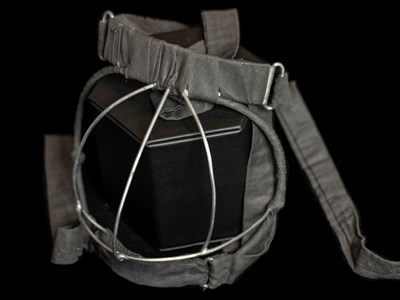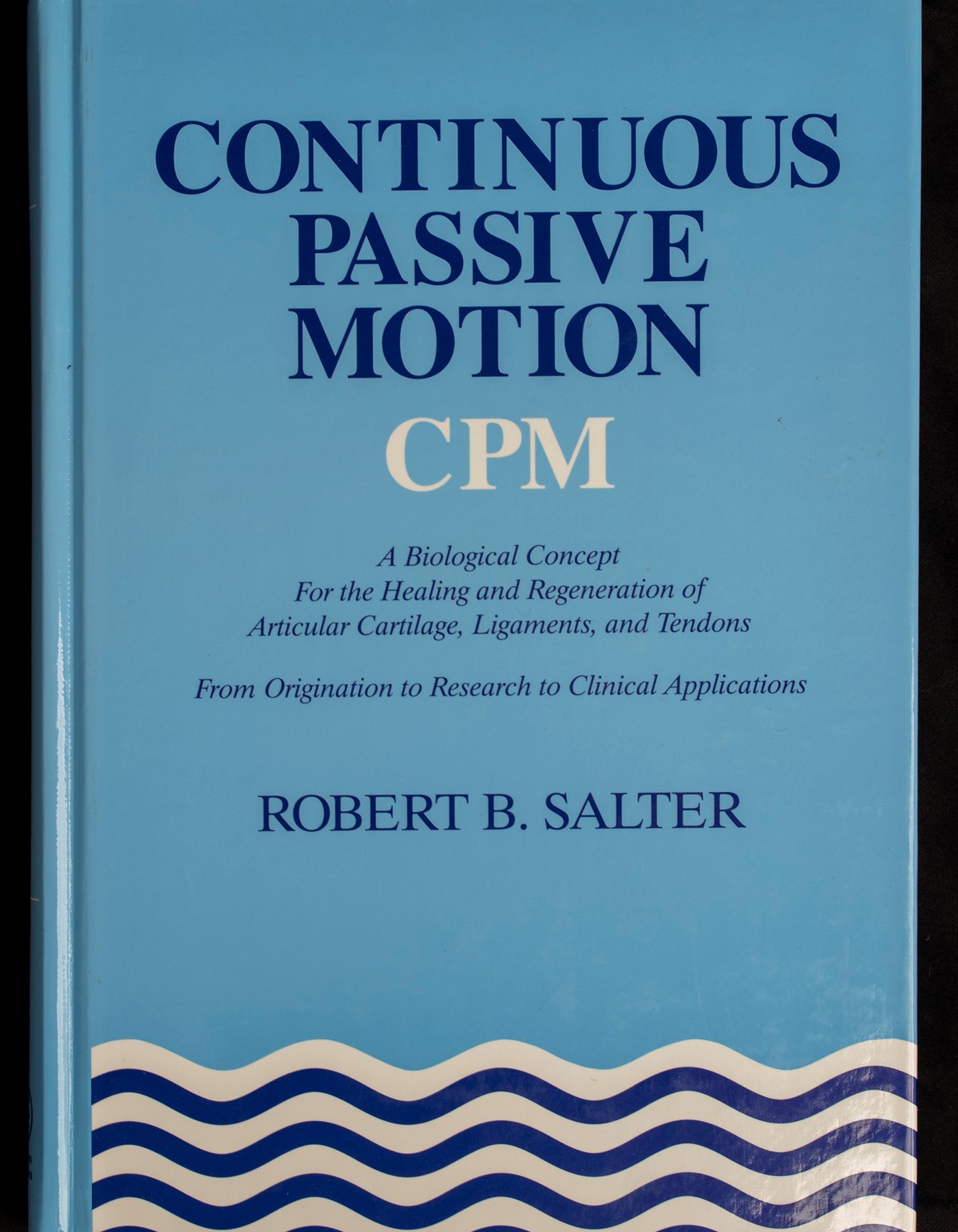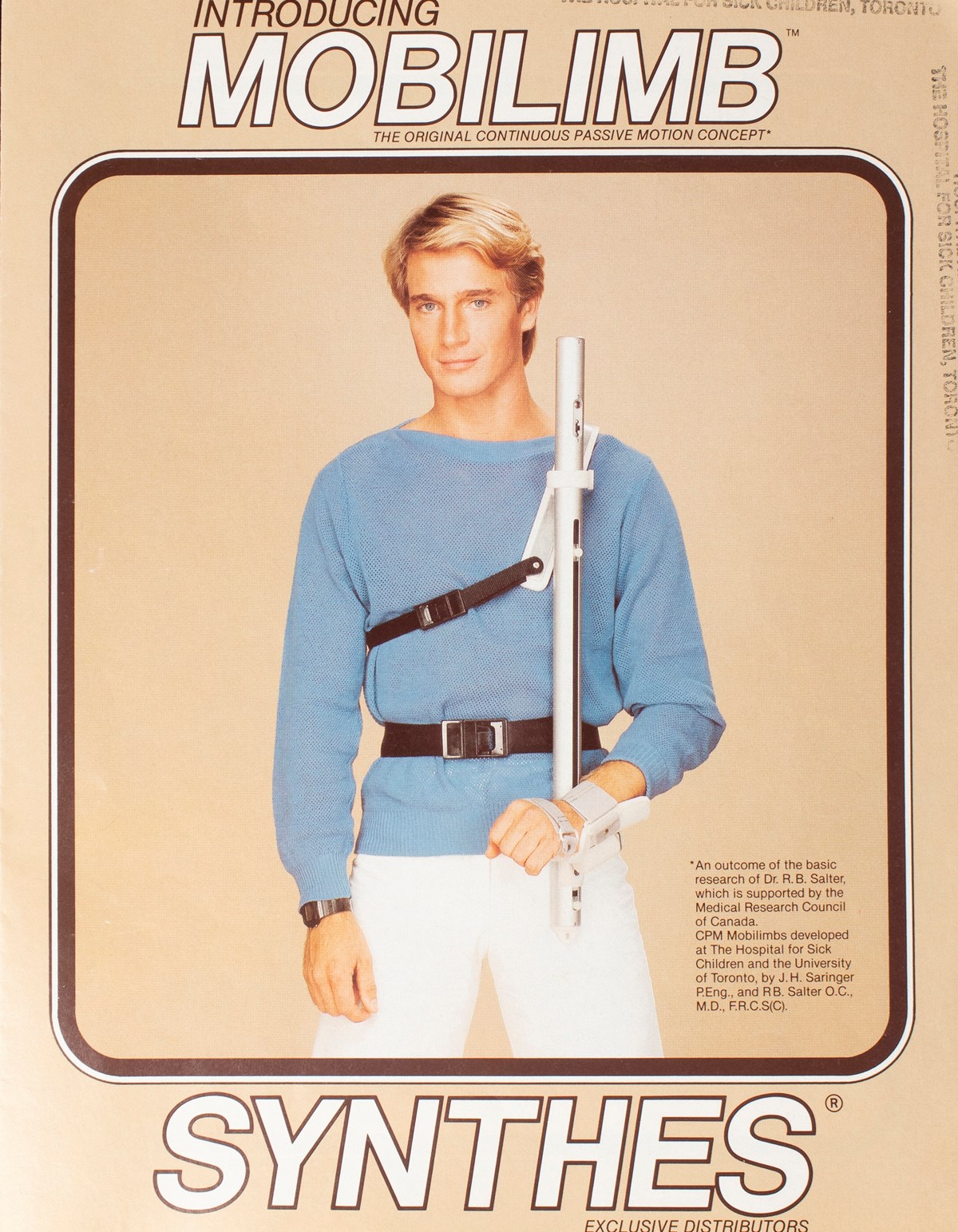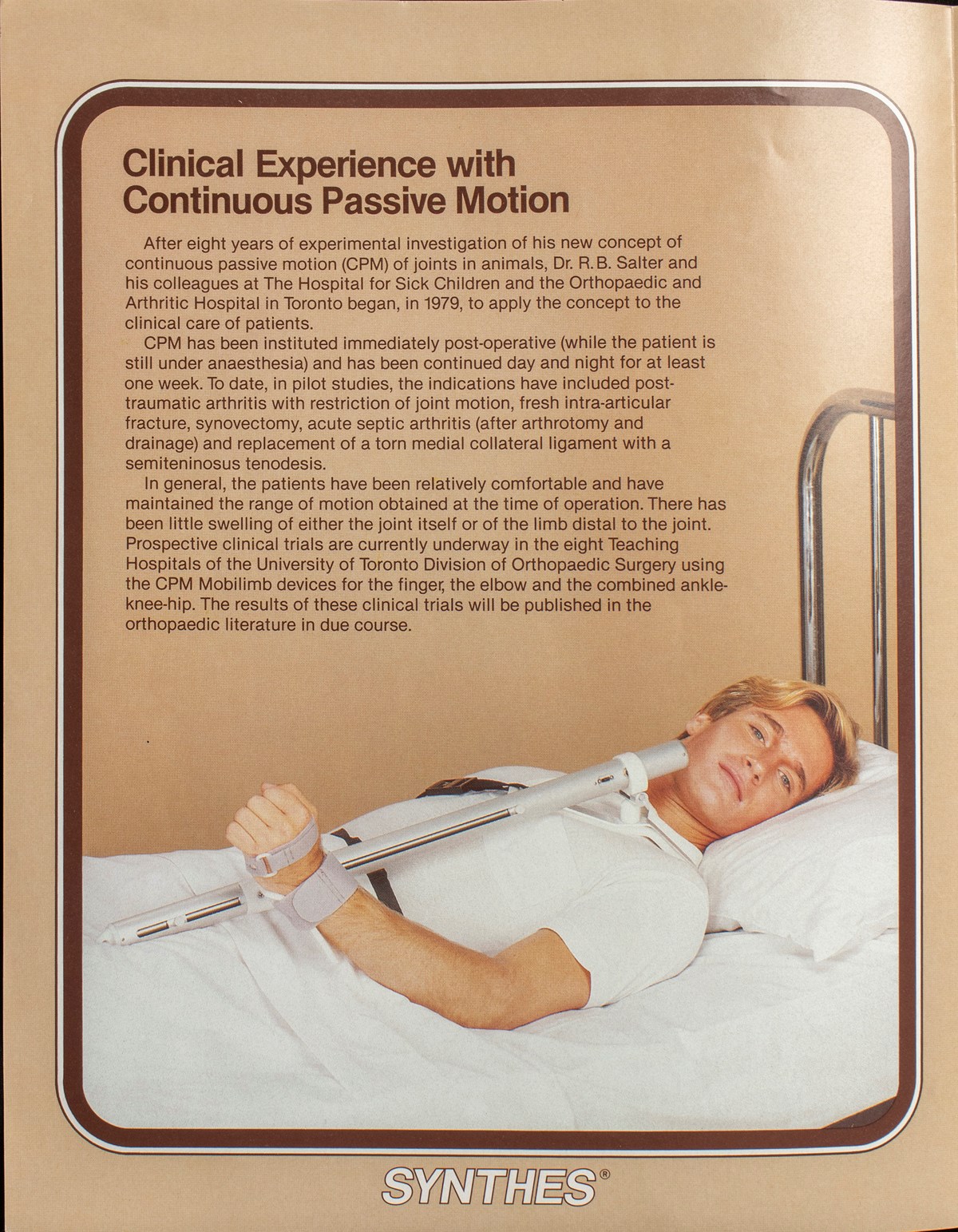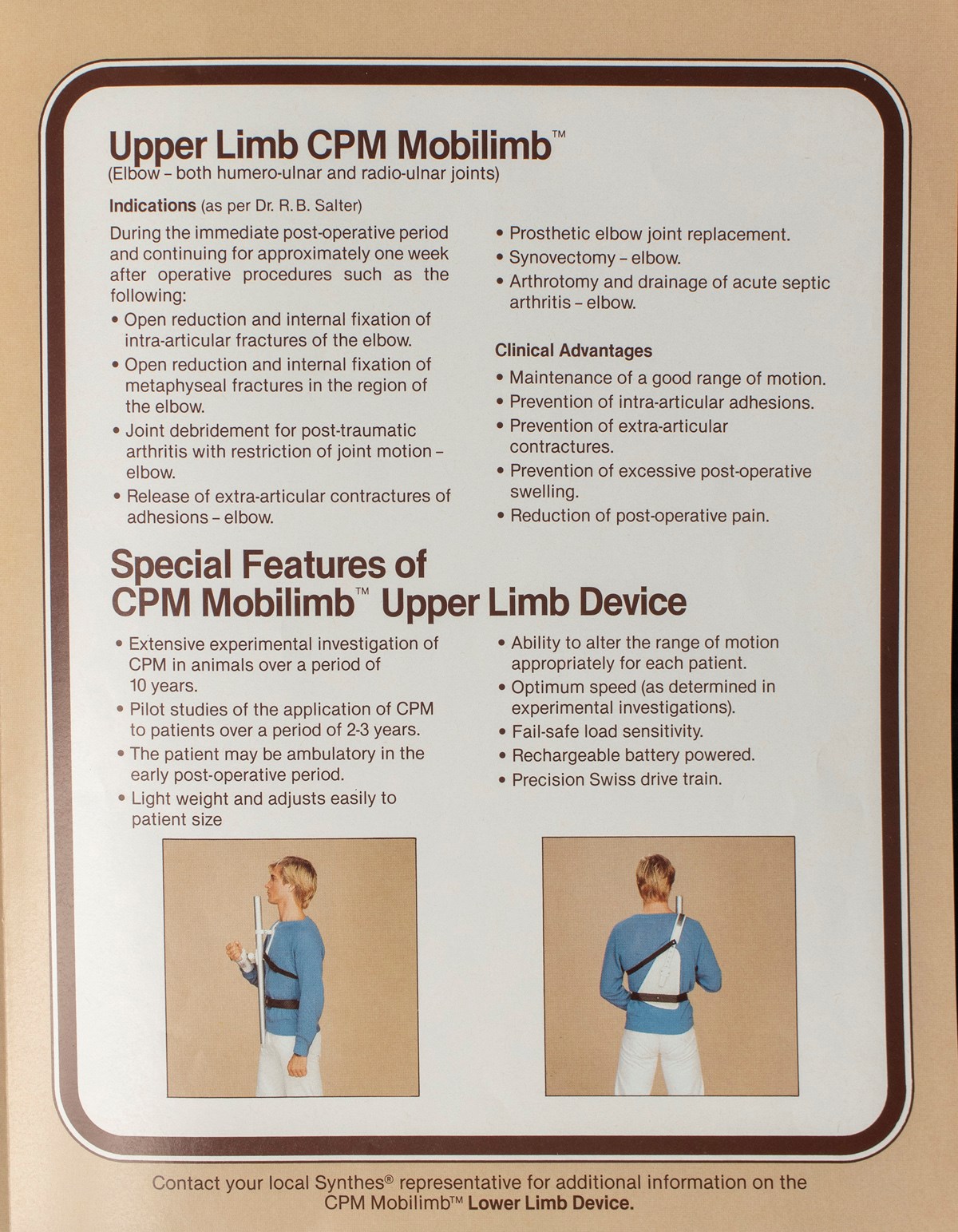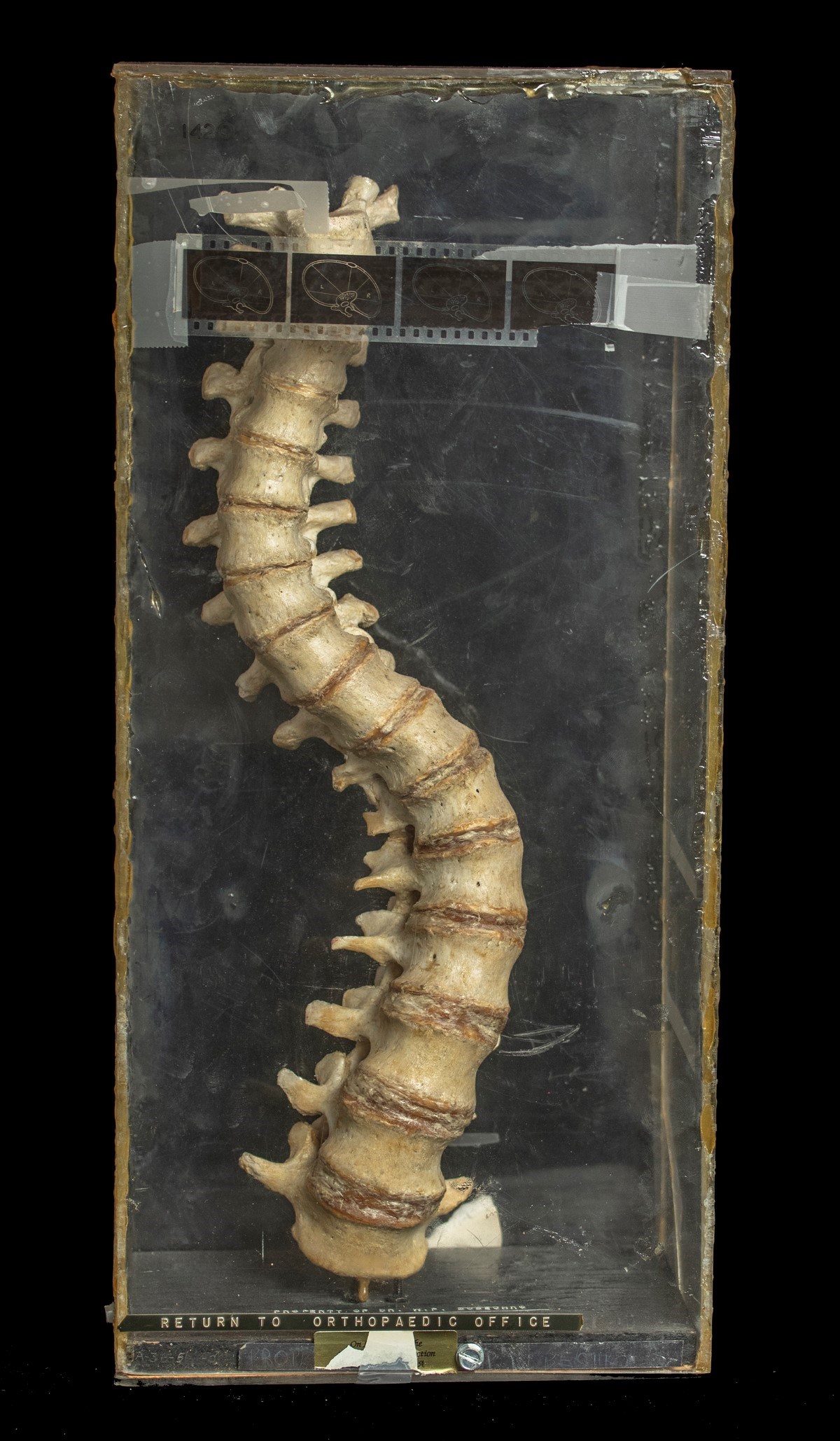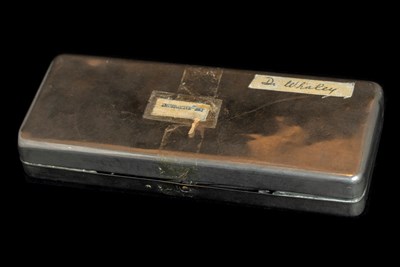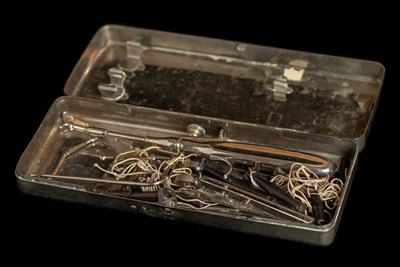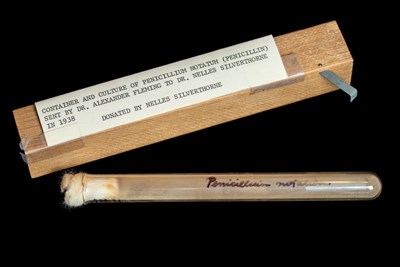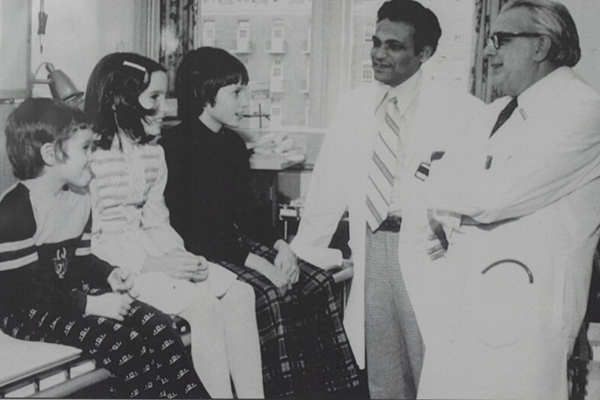
Research Meets Clinical Care
Mask to prevent eating lead paint
This is a custom mask made for a patient at SickKids. The patient was admitted in 1936, after being diagnosed with lead poisoning due to eating lead paint chips from their family porch. Lead paint had a sweet taste, which was something toddlers and children were likely to eat. This mask was made to be worn by children to prevent them from licking the paint. The mask was later donated back to SickKids.
Salter Continuous Passive Motion device
The Salter Continuous Passive Motion (CPM) device was a revolutionary development in the field of orthopedic surgery. It was invented by Dr. Robert Salter, an orthopaedic surgeon who began at SickKids in 1955, when Dr. Alfred Farmer was head of surgery. The device is used post-operatively to assist patients regain range of motion in their joints, particularly the knee. The Salter CPM works by continuously and gently flexing and extending the joint, preventing the formation of scar tissue and promoting healing. It was a major improvement over traditional post-operative treatment, which involved immobilizing the joint with a cast or brace. Today, the Salter CPM remains an important innovation in the field and has had a significant impact on patient care and recovery. The main auditorium of the Peter Gilgan Centre for Research and Learning is named after Dr. Salter with a bust statue of him located outside.
Scoliosis spine
This spine originates from the esteemed lab of Dr. Walter P. Bobechko, a renowned paediatric orthopaedic surgeon at SickKids. Dr. Bobechko was widely regarded as a compassionate and dedicated professional, known for his expertise in treating spinal conditions in children. The spine is believed to have belonged to a patient in their twenties who suffered from idiopathic scoliosis of the thoracic spine, presenting a unique double curve. We express our gratitude to Dr. Reinhard Zeller for his invaluable contributions in shedding light on this remarkable spine model.
Surgical instruments
This kit originates from the esteemed Dr. James Whaley, a former chief at SickKids, specializing in the field of otolaryngology. The kit includes miscellaneous medical instruments from the time of Dr. Whaley.
Vial of penicillin
Donated by Dr. Nelles Silverthorne and sent to SickKids by Dr. Alexander Fleming in 1938.
Dr. Alexander Fleming, a Scottish physician-scientist, discovered penicillin in 1928 and shared his findings with the world. In 1938, Dr. Nelles Silverthorne, a microbiologist at SickKids, requested a sample of the original penicillium culture from Dr. Fleming to continue the research. The culture was successfully transported from England to Canada, where it was cultivated and studied by Dr. Silverthorne and his team making him one of the first Canadian physicians to use penicillin. This culture was the first step towards the mass production of penicillin, which went on to revolutionize modern medicine. This culture is a symbol of the importance of scientific collaboration and the tireless pursuit of medical breakthroughs.


